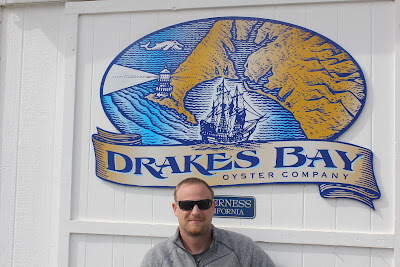Big barrels, wet tongues,
whiskey-toting monks, and a mechanical bull named Tipsy. Put on your big boy
pants for shenanigans of unprecedented magnitude with the world’s best
distilleries. They call it Devil’s Mouthwash….. I call it, The Second Annual
WhiskeyFest Northwest, May 9th 2o14… The day was awash in overcast
skies, bulbous grey clouds and light scattered showers…. Ms. Hannah and I left
our humble abode up on N. Interstate and headed downtown over the Broadway
bridge to get in to The Pearl, downtown PDX,s newest ultra-lux neighborhood
with catastrophic priced spaces the size of fucken shoeboxes…. We arrived in
the pouring rain, parkin’ like a rock star directly across the street from the
entrance to what could possibly be the most waited for nd anticipated event of
the year (at least for this bourbon drinker)…. We arrived at the volunteer
tent, collected our bright green volunteer t-shirts and got our alcohol monitor
style bracelets on, we were told that we would be pouring for BEND DISTILLERY
whom makes CRATER LAKE RYE WHISKEY…. And whom I am very familiar with…. At the
last bar I owned, which featured the largest collection of pacific northwest
spirits in the pacific northwest; we poured the shit out of Crater Lake Rye….
Our PICKLEBACK was a shot of Crater Lake Rye followed by a chaser of straight
dill pickle juice… ok, with all that behind us we get to the Crater Lake booth
to find the Crater Lake Girls completely ready to be relieved by Hannah and
I…. relief on…. The Crater Lake Girls
headed out and left Hannah and I to represent BEND DISTILLERY and to pour their
newly released CRATER LAKE RYE WHISKEY…
so pour we did, shot after shot… people expected CRATER LAKE RYE to be
run of the mill cause it is in a booth with the bigger names like Elijah Craig,
Bulliet, Jack Daniels and Angel’s Envy… it was easy to turn people on to this
rye that is only 1yr out of the gate and 1yr old in age… having worked TOAST a
few weeks ago and having known Allen the CEO of BEND DISTILLERY, we were very
familiar with the two CRATER LAKE GIRLS and thoroughly enjoyed pouring their
RYE… making the rounds of the event I was able to shout out to Ted Pappas the
president of THE OREGON DISTILLERS GUILD and owner of Big Bottom Whiskey Co. I
also ran across the boys at POK POK and in the prohibition cigar lounge the
sounds of Portland’s own BOY & BEAN could be heard throughout… oh, BOY
& BEAN…… Luke, Andrew and Samantha, I have gone to see these guys all over
PDX, they are the finest example of that pre-prohibition sound the 20’s had to
offer in this day and age… Hannah and I sat at our booth and discussed the
food, drink and music scene of our city over glasses of Elijah Craig 12yr old
Bourbon with the BOY & BEAN trio…the funny thing is, they leave to play at
THE PICKLED FISH in the ADRIFT HOTEL later this evening… I stopped by and took
the short course offered, STUART RAMSAY’S DRAM ACADEMY, giving me an overview
of the history and culture of each whiskey dram and region… next up was the
cocktail competition, I definitely have a favorite or two in this competition…
Chauncey Roach of Racion, Emilly Mistel of the Rum Club and Justin Siemer of
The Richmond bar… oh- I hope you guys bring your best, I know and love you
all…. [good luck] eating and drinking with the folks that are
in our industry is what we enjoy while spilling drinks in our city… and oh yeah- knowing the boys @ POK POK
always pays off…. see POK POK chicken
wings are the dankest fricken chicken wangs on da planet… so you best believe
that that pregnant chick I call the love of my life (ms hannah) got a big ass
plate of those fish sauce soaked twangy wangs to mow down from POK POK… would
love to thank THE LUNA FOUNDATION for the wonderful opportunity that allowed me
to taste all of these whiskeys for fricken free, no worries, I will take full
advantage of this… for following is a list of all the whiskey, bourbon and rye
I was able to consume in the short two days you allowed me to do so…
Bullleit Bourbon, Bulleit Bourbon 10yr
Old Bourbon, Bulleit Rye, Crater Lake Rye, George Dickel, Knob Creek Bourbon,
Knob Creek Smoked Maple Bourbon, Knob Creek Bourbon Single Barrel Reserve,
Bernheim Wheated Whiskey, Elijah Craig 12yr Old Bourbon, Evan William’s Single
Barrel Bourbon, Tincup, Eagle Rare, Buffalo Trace, Angel’s Envy Bourbon,
Angel’s Envy Rye,Bird Dog Bourbon, Templeton Rye, Woodford Reserve, Jack
Daniels, Gentleman Jack, Jack Daniels Single Barrel, New Holland Distillery
Beer Barrel Bourbon, Four Roses Single Barrel Bourbon, Four Roses Small Batch
Bourbon, Pendleton, C.W. Irwin Whiskey, Temperance Trader, Whippersnapper
Whiskey, Henry Dewyor’s, Big Bottom American Straight Bourbon, Big Bottom Port
Cask Conditioned Bourbon, Big Bottom 111 Proof Bourbon, Big Bottom Zinfandel
Cask Conditioned Bourbon, Big Bottom Cabernet Cask Conditioned Bourbon, Eastside
Distilling Burnside Bourbon, Dry Fly Washington Wheat Whiskey, Dry Fly Bourbon
101, Rogue Dead Guy Whiskey, Rogue Farms Oregon Single Malt Whiskey, Batch 2o6
Barrel Raider Whiskey, 4 Spirits Whiskey……

























